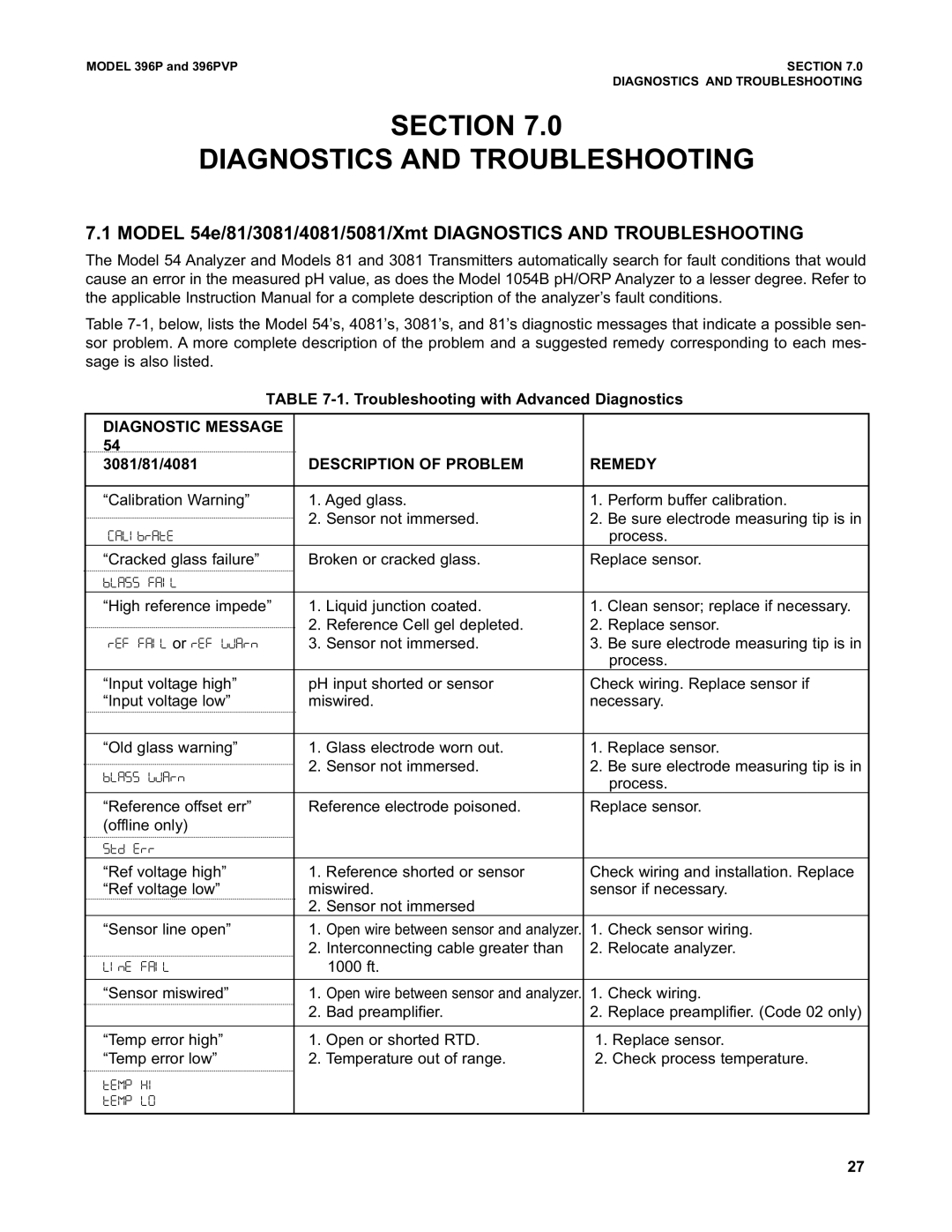396P, 396PVP specifications
Emerson Process Management has established itself as a leader in the automation industry, providing innovative solutions that enhance operational efficiencies and improve process control. Among its notable offerings are the 396PVP and 396P pressure transmitters, designed to meet the needs of various industrial applications.The 396PVP model is equipped with advanced features that facilitate high-performance measurements in both challenging and standard environments. This pressure transmitter utilizes a piezoresistive sensor, allowing for accurate and reliable pressure readings. It supports a wide range of measurement capabilities, making it suitable for liquids, gases, and vapors across diverse industries. With an impressive pressure range, the 396PVP caters to various applications, from HVAC systems to more demanding scenarios in oil and gas extraction.
In terms of technology, the 396PVP leverages digital communication protocols, including HART and FOUNDATION Fieldbus, enabling seamless integration into existing control systems. This capability not only enhances data transmission but also facilitates remote monitoring and diagnostics, significantly reducing downtime and maintenance requirements. The transmitter is also designed with an intuitive interface, allowing for straightforward configuration and calibration via handheld devices or software.
On the other hand, the 396P model offers exceptional performance for demanding pressure measurement requirements. It features robust construction materials that ensure durability and resistance to harsh environments, making it an ideal choice for applications in chemical processing and power generation. The 396P is designed with a fast response time, ensuring real-time data accuracy, which is critical for maintaining process integrity and safety.
Both models showcase Emerson's commitment to safety and reliability. They are built to meet stringent industry standards, which guarantees quality performance in hazardous locations. Furthermore, the embedded diagnostic features provide real-time health monitoring, alerting operators of any potential issues before they escalate, thereby safeguarding operations.
In summary, the 396PVP and 396P pressure transmitters from Emerson Process Management exemplify cutting-edge technology and high-quality engineering. With their advanced sensing capabilities, robust design, and integration-friendly features, these transmitters are essential tools for optimizing process control and enhancing overall productivity in various industrial settings. Whether it's for precise measurements in a chemical plant or reliable pressure readings in an oil field, the 396 series offers the performance and durability required to thrive in today's demanding operational landscapes.

